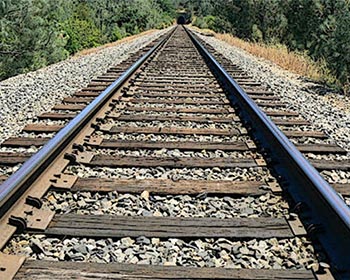NDSU Researchers Develop Statistical Model to Improve Railroad Crossing Safety Prediction Performance
Posted: Mar 18, 2020
 Researchers at North Dakota State University's Upper Great Plains Transportation Institute developed a new modeling approach to more accurately predict the likelihood of accidents at highway-rail grade crossings, locations where a highway and railroad cross at the same elevation. The approach performs well with far fewer false positive estimates compared to decision tree model and can help agencies allocate safety resources to where they can do the most good.
Researchers at North Dakota State University's Upper Great Plains Transportation Institute developed a new modeling approach to more accurately predict the likelihood of accidents at highway-rail grade crossings, locations where a highway and railroad cross at the same elevation. The approach performs well with far fewer false positive estimates compared to decision tree model and can help agencies allocate safety resources to where they can do the most good.
The research was recently published in the journal, Reliability Engineering & System Safety. "Accident Prediction Accuracy Assessment for Highway-Rail Grade Crossings Using Random Forest Algorithm Compared with Decision Tree," was written by Xiaoyi Zhou, Pan Lu, Zijian Zheng, Denver Tolliver, and Amin Keramati. Zhou, Zheng and Keramati are doctoral students in transportation and logistics and research assistants at UGPTI. Lu is an associate professor of transportation and a researcher at UGPTI. Tolliver is the director of UGPTI.
Lu noted that the "random forest" method dramatically improved prediction accuracy without providing additional false positive predictions. In 2018 in the United States there were more than 2,200 incidents including 272 fatalities and 805 injuries at highway-rail grade crossings. "This may give agencies a tool to allocate their safety improvement budgets more effectively, reduce safety improvement costs, and direct spending to the locations where improvements are needed most."